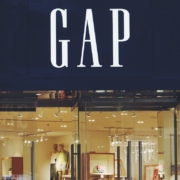Dior’s Dilemma And Anorexia Industriosa
Over the two past decades, the concept of luxury underwent some conceptual changes. The definition of luxury as something inessential, desirable, expensive and difficult to obtain has changed. Luxury goods are now obtainable around the globe. Luxury goods can be purchased online. Luxury goods are available at airports and shopping malls. And, luxury goods are bought by many people, not just those from the upper echelons of society.
Jean-Noël Kapferer, a French brand marketing guru who writes about luxury, created a name for the current luxury brands situation. He calls the phenomenon, Abundant Rarity. This is paradoxical. That is, rare luxury items happen to be available to anyone anywhere. Abundant rarity is a marketing and conceptual paradox where items are rare and are available anywhere. Monsieur Kapferer believes that increasingly luxury brands need to figure out how to master the paradox of abundant rarity.
Abundant rarity has sparked many discussions around whether or not a brand can actually be a luxury brand and, at the same time, be sold to everyone everywhere. Many argue that it is impossible to be luxury and be abundant. They argue that abundance negates the exclusivity that is part of a luxury brand’s DNA. They argue that a luxury brand’s provenance and brand promise assure that the luxury brand – by virtue of the fact that it is luxury of the highest standards – is restrictive and limited in its availability and thus desired for this specific rarity. They argue that abundance tarnishes a luxury brand, demoting its luxury image to everyday.
Now, we learn from The Wall Street Journal, that luxury brands have figured out how to tarnish their provenances and promises in another way. Luxury brand are making their expensive offerings on the cheap, as it were. Think of this as Anorexia Industriosa.
Anorexia Industriosa, cutting costs to the bone, is dangerously detrimental to brand health. CEOs and senior managers fall in love with cost management over brand management. Cost management allows for greater shareholder and C-Suite profits. Focusing only on cost cutting does not create real sustainable value. Businesses cannot cost manage their brands to enduring profitable growth. At some point, there are no more costs to cut. Cutting costs chokes off resources for investing in a brand’s future potential. Brands receive fewer resources, and then, are milked, thinned, and discarded. If high quality production is no longer a luxury promise than you might as well consider the knock-off hawked by the street vendor.
Cost reductions show up immediately in quarterly reports and on balance sheets. Of course, eliminating waste and improving productivity are a continuing challenge and important for maintaining brand-business health. But, cost cutting alone takes you only so far. Brands need plans, people and actions that will deliver high quality revenue growth leading to enduring profitable growth. And, luxury brands have heritages to uphold.
It is unfortunate that many businesses cloak cost cutting as a strategy for building strong businesses. Improving productivity is good. But, for enduring profitable growth, businesses need to invest in increasing brand strength. Financial discipline is more than across-the-board cost cutting.
Anorexia Industriosa is especially dangerous for luxury brands. One of the elements of luxury is the idea of craftsmanship. In other words, luxury brands have a caché of and heritage in quality of design and work made by hand; an overarching inherent artistry.
When luxury brands, such as we learned about Dior, farm out their manufacture to facilities that are like ‘sweatshops,” the essence of the brand can become denigrated. Sure, outside manufacturing facilities help with increased demand. But, the use of certain types of outside factories to make luxury goods has one real purpose: margins. Worshiping at the altar of margins tends to have a negative effect on a brand, luxury or not. This is because high-margin brands are more attractive and reassuring to shareholders. Catering to shareholders over catering to customers is a tendency for trouble. Thin margins tend to convey less profitability.
It seems that some luxury brands are now made by the same sort of outside factories that make fast fashion items: factories that churn out items saving businesses lots of money when manufacturing. As The Wall Street Journal points out, the use of “independent workshops” by luxury brands can create a “reputational” crisis. Not only are there the social and legal ramifications, but there are image-tarnishing issues that no luxury brand wants to shoulder.
And, Dior. Mon Dieu.
Dior is one of those luxury brands that helped define an era of haute couture. Dior’s “New Look” in the late 1940s, restored France’s heritage of fashion. Dior brought glamor and youthfulness back to fashion. After years of world wars, Dior’s creations helped to bring back life and liveliness to France.
And, now, we learn that using the outside facility, Dior’s cost of assembly for that US $5000 handbag may be as low as US $57. Anorexia Industriosa!
These financials may make sense to you. After all, look at the margins! Just a note here: consumers do not care about your margins. Consumers care about quality and living up to expectations. A brand is a promise of a relevant, differentiated expected experience.
When people are willing to pay large sums of money for your brand, it is because people see value in that brand. But, brand value depends on trust. Trust is built over time. Trust can dissolve quickly. Can a consumer trust that the $5000 handbag assembled by a “sweatshop” for under $100 has the same brand value as the one created in-house with care? Is the Dior name strong enough to manage this discrepancy? Can a consumer trust that a brand is luxury when that brand is made in a non-luxury manner? Is this assembly in keeping with the brand’s provenance and promise? Is this assembly a new version of abundant rarity? Should a luxury brand be subject to Anorexia Industriosa? Could be, as the outside facility is a cost-cutting factory designed to make an abundance of ”rare” items.
The global services company Deloitte writes that luxury brands are now using digital passports. These digital passports relay the luxury brand’s “authenticity, sustainability and trust” to the customer. However, what happens if that luxury brand is manufactured not with the expected craftsmanship but with the outside, independent facility? Deloitte indicates that the digital passport certifies authenticity and insights in craftsmanship. How does this work in this manufacturing mindset of Anorexia Industriosa?
The combination of abundant rarity and anorexia industriosa is self-immolating for luxury brands. To provide abundance, some luxury brands will need to manufacture product at minimum costs to meet demand. The cheaper the production, the better for the bottom line. But, more availability which may be based on less traditional craftsmanship and art could damage a luxury brand’s customer perception as exclusive and worth the costs.
Just as Dior defined a new luxury couture in post-war France in the late 1940s, all luxury brands must start redefining what it means to be a luxury brand today. Does luxury extend to the way in which a product is manufactured? Does the luxury brand’s provenance and promise extend to how the luxury brand is made? Of course, financial discipline is expected in every Board room and every analyst earnings call. But, does that mean that a luxury brand be subject to Anorexia Industriosa? Does Anorexia Industriosa tarnish a luxury brand to the extent that the brand is no longer considered luxury? If so, then the paradox of abundant rarity will define luxury as we move forward.










